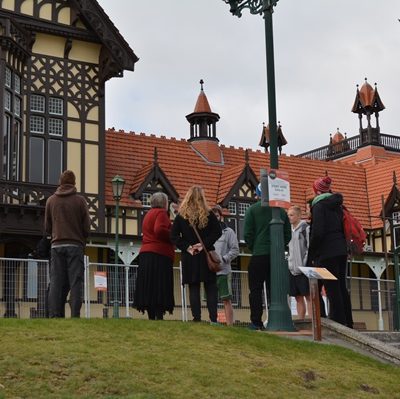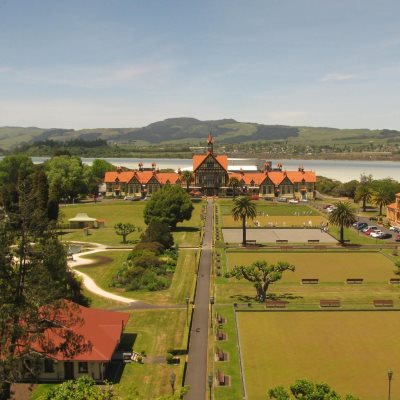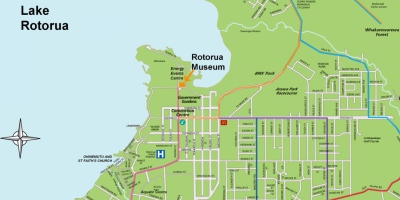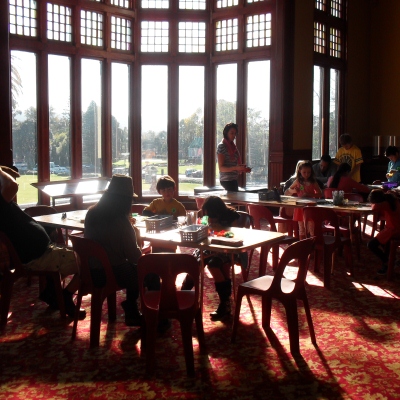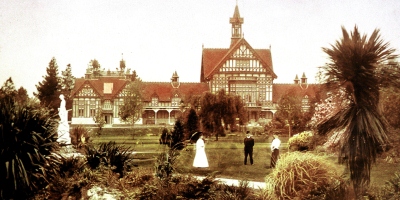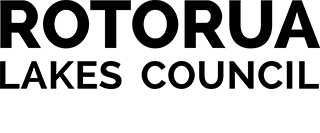Build a Bath House
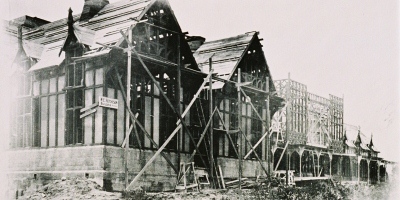
Choosing the Location
In 1901 responsibility for the spa, and the administration of the small town of Rotorua, was taken over by the Department of Tourist and Health Resorts. In 1902 they appointed Dr Arthur Stanley Wohlmann as the first Government Balneologist.
“The building site selected is almost ideal. Close to the centre of town, with a large open lawn in front, gay flower-beds, lakelets and winding paths, a belt of trees behind hiding the springs and mud pools, beyond this the blue expanse of Lake Rotorua, and circling all the green and russet and purple hills.” AS Wohlmann to TE Donne, 1902.
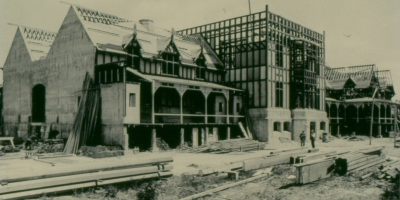
Building the Bath House
“Dr AS Wohlmann is very anxious to at once proceed with the inauguration of a new era of things at Rotorua, and proposes that immediate steps be taken to construct a new bath house.” TE Donne, Superintendent, Dept of Tourist and Health Resorts, 1902.
By late 1902 plans had been drawn up by Wohlmann and the Inspector of Works for the Tourist Department, architect BS Corlett, for a grand new bath house. WJ Trigg assisted and JW Wrigley helped complete plans. The successful tenderer was W Hutchinson of Auckland with a bid of £25,750.
Building techniques were innovative. Lightweight pumice concrete slabs were prefabricated for walls, and barbed wire was embedded to reinforce walls and floors. Pumice concrete was also used to make the 1.8m high arch foundations, which provide ventilation and easy access to pipes and drains. Native timbers of kauri, tōtara, matai and pūriri were milled and used in the construction of the building.
Initial plans included eight deep baths, 12 mud baths and 42 shallow baths along with large massage and Turkish baths, two electrical bathrooms, and four vapour and hot air rooms. These plans had to be scaled back as funding ran out.
Equipment purchased by Dr Wohlmann was varied and modern. He purchased up-to-date hydrotherapy products and experimented with bath design, tile types and colours. Despite disagreements between Wohlmann and Corlett over design and materials, the building was ready to open on 31 May 1908.
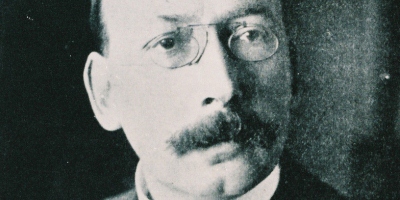
Dr Arthur Stanley Wohlmann
The drive and vision of the first Government Balneologist, Arthur Stanley Wohlmann, are key to the story of the Bath House. After graduating from Guy’s Hospital, London in 1891, Wohlmann worked for several years at the Royal Mineral Water Hospital in Bath, England.
In 1902 he arrived in Rotorua faced with the challenge of improving spa facilities in the city and assessing other spas throughout New Zealand. Within a year he had prepared a concept that “would do credit to the most famous spas in Europe” (Quote from balneologist’s report to Department of Tourist & Health Resorts, 1907).
Until 1919, when Wohlmann and his family returned to England, he maintained an enthusiasm for his job and an ardent belief in the benefits of thermal waters. He wrote a number of authoritative books on the subject.
Wohlmann responded to anti-German prejudice during the First World War by changing his name to Herbert. From 1920 until his retirement he practised privately in Kensington, London. Arthur Stanley Herbert died on 3 March 1944 aged 77.


